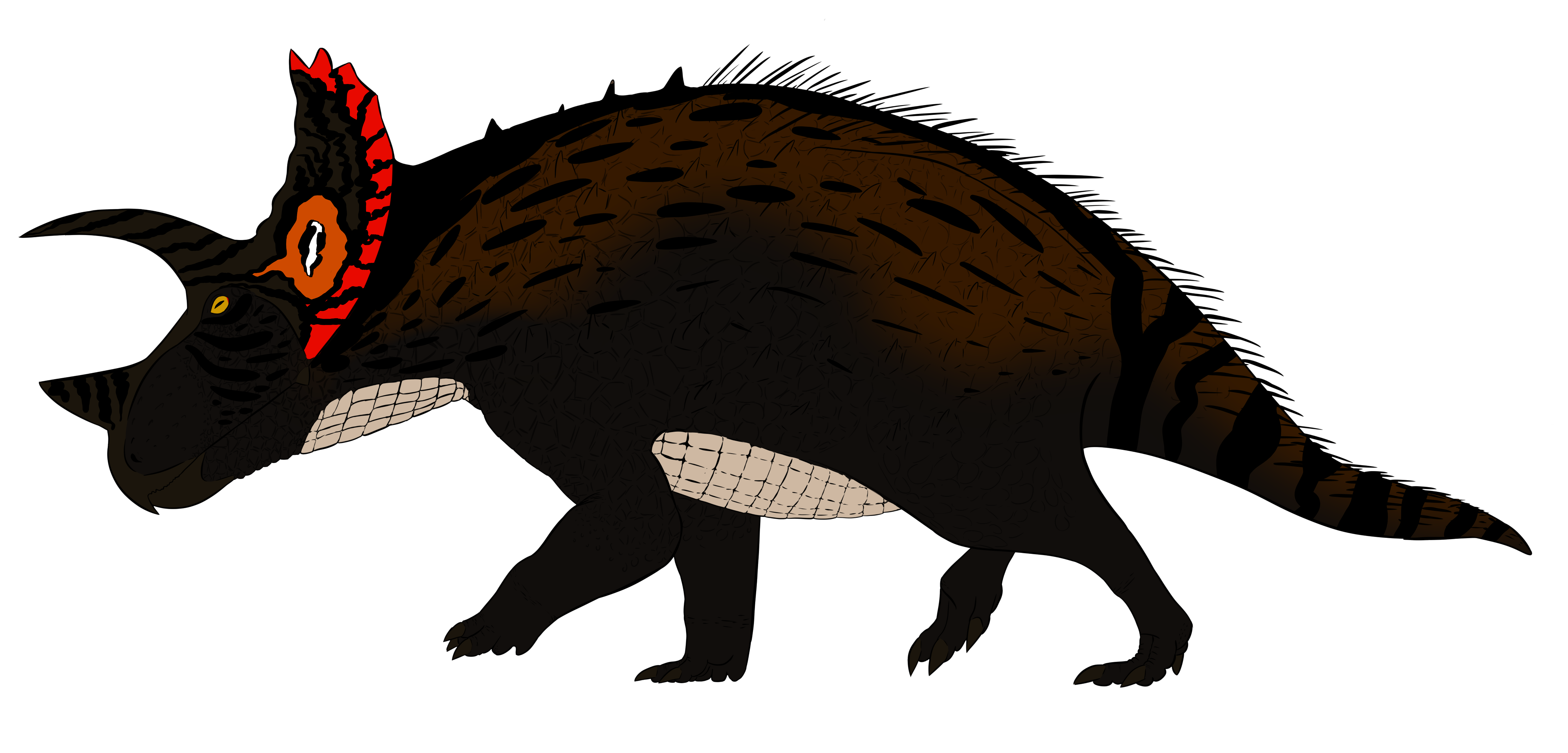Triceratops

|
|
|
Everyone knows the face of Triceratops, with three horns and a solid bony frill coming out of the back. Its head is long and thin, ending with a sharp beak. Its nasal openings are huge, potentially housing a unique soft tissue structure. Its teeth are arranged into batteries, well-adapted for shearing fibrous plants. Triceratops' brow horns can grow over three feet long! The horns started short and stubby in babies, curving backwards in juveniles before curving fowards in adults. The skull frill is solid, unlike in other ceratopsids, and the rim is studded by small bones called epioccipitals. Its body, like other ceratopsids, is compact and short-tailed. Hundreds of Triceratops fossils are known, making it one of the most well-known dinosaurs and a pop-culture darling since its discovery. Despite this, it was probably not a herding animal. It ate low-lying plants from forests and praires, making short work of them with its beak and dental batteries. Its horns and frill were probably used primarily for display, but could have made reliable weapons in combat. Our Triceratops can be found, probably wallowing, in Gladiators of the Mesozoic. We use vehicular enrichment to quench the tempers of our males during the rutting season. |
Scientific name Location Time Length Diet |